“[A] relatable and emotional saga” – BookLife, by Publishers’ Weekly
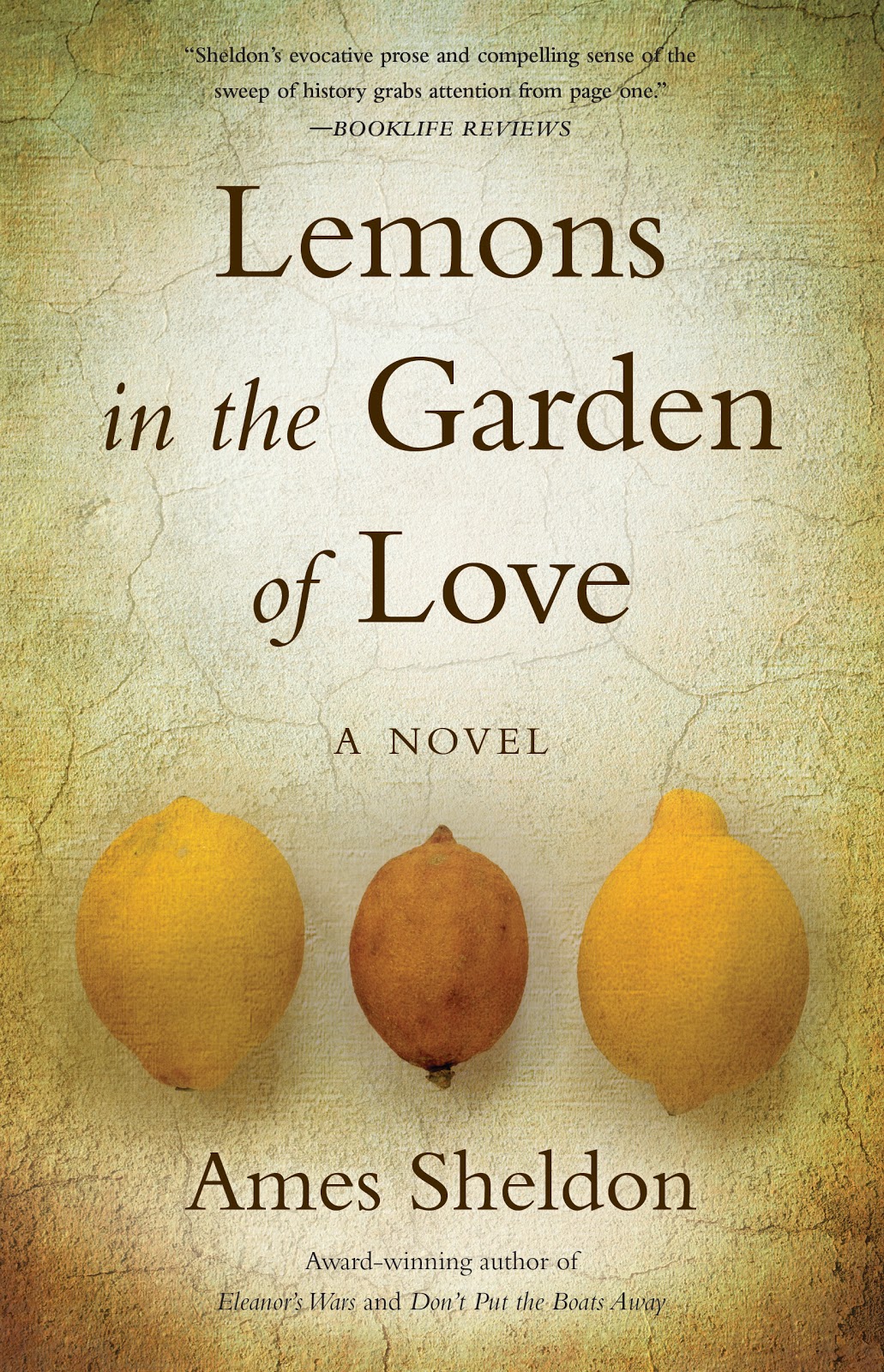 Minneapolis, Minnesota–After Justice Ruth Bader Ginsberg’s passing in September, social media instantly flooded with posts mourning and honoring Ginsberg’s life and legacy. Yet the newly vacant Supreme Court seat also caused concern, with many women wondering if, how, and when their access to birth control would be impacted. At a time when reproductive rights are still being contested across the country, novels like “Lemons in the Garden of Love” (She Writes Press, May 11, 2021) should be required reading.
Minneapolis, Minnesota–After Justice Ruth Bader Ginsberg’s passing in September, social media instantly flooded with posts mourning and honoring Ginsberg’s life and legacy. Yet the newly vacant Supreme Court seat also caused concern, with many women wondering if, how, and when their access to birth control would be impacted. At a time when reproductive rights are still being contested across the country, novels like “Lemons in the Garden of Love” (She Writes Press, May 11, 2021) should be required reading.
In “Lemons in the Garden,” it’s 1977 and Cassie Lyman, a graduate student in women’s history, is struggling to find a topic for her doctoral dissertation. When she discovers a trove of drawings, suffrage cartoons, letters, and diaries at Smith College belonging to Kate Easton, founder of the Birth Control League of Massachusetts in 1916, she believes she has located her subject.
Digging deeper into Kate’s life, Cassie learns that she and Kate are related―closely. Driven to understand why her family has never spoken of Kate, Cassie travels to Cape Ann to attend her sister’s shotgun wedding, where she questions her relatives about Kate―only to find herself soon afterward in the same challenging situation Kate faced.
A moving portrait of two women, whose stories shed light on the life-changing power of the ability to determine one’s reproductive future.
“Lemons in the Garden of Love”
Ames Sheldon | May 11, 2021 | She Writes Press | Historical Fiction
Paperback | ISBN: 978-1647420482 | $16.95
Praise for the author…
Lemons in the Garden of Love is “part feminist history, part journey of self-discovery… Sheldon’s evocative prose and compelling sense of the sweep of history grabs attention from page one.”
–BookLife, by Publishers’ Weekly
“Don’t Put the Boats Away is chock-full of well-researched historical details about political events, medical advancements, and even food trends of the 1940s, ’50s, and ’60s, and it also offers important commentary on professional opportunities for women during these decades. The author creates believable characters with complex interior lives. Overall, it’s a touching tale that examines the ways in which grief, regret, and unmet expectations can reverberate through generations.”
–Kirkus Reviews
“The world needs more novels like this.”
–Louisa Hall, The Carriage House, Speak, and Trinity
“Don’t Put the Boats Away is a timeless portrait of life’s loves and losses…the novel has raw and dark undertones…Sheldon explores the furtive topics of mental illness and social conflicts with modern clarity…Her characters are empathetically real.”
–Minnesota Monthly
“Ames Sheldon’s remarkably assured debut novel Eleanor’s Wars takes place in 1940s New Jersey and provides the reader with a fascinating view of the Second World War from the home front stage…The novel is a steadily-deepening web of secrets and revelations, something that kept me reading intently right to the last page.”
–Teresa Devine, Historical Novel Society
“Women’s History Sources is monumental… It is a magnificent contribution, and .. sets a standard that will not soon be equaled, let alone exceeded!”
–Frank B. Evans, Archivist of the United States
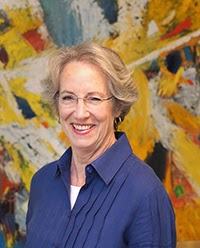 AMES SHELDON: was born in Minneapolis, Minnesota, and grew up in Wayzata, Minnesota. After graduating from Northrop Collegiate School, she attended Bryn Mawr College, where she majored in English. After graduating, she worked in the legal department of a chemical company, as a reporter at two newspapers, as office manager of a start-up auto salvage business, and eventually as a grant writer and development officer for a variety of nonprofit organizations, ranging from the Sierra Club in San Francisco to the Minnesota Historical Society and the Minneapolis Public Library. She has an M.A. in American Studies and was lead author and associate editor of the groundbreaking Women’s History Sources: A Guide to Archives and Manuscript Collections in the United States (R.R. Bowker, 1979). In the process of working on this monumental reference book, Ames discovered her love of women’s history and of using primary sources for research. Her debut novel, Eleanor’s Wars, won the 2016 Benjamin Franklin Gold Award for Best New Voice: Fiction. Her second novel, Don’t Put the Boats Away, was published on August 27, 2019, by She Writes Press. Her third novel, Lemons in the Garden of Love, will be published in 2021. For more information on Sheldon’s life and work, please visit: http://amessheldon.com/
AMES SHELDON: was born in Minneapolis, Minnesota, and grew up in Wayzata, Minnesota. After graduating from Northrop Collegiate School, she attended Bryn Mawr College, where she majored in English. After graduating, she worked in the legal department of a chemical company, as a reporter at two newspapers, as office manager of a start-up auto salvage business, and eventually as a grant writer and development officer for a variety of nonprofit organizations, ranging from the Sierra Club in San Francisco to the Minnesota Historical Society and the Minneapolis Public Library. She has an M.A. in American Studies and was lead author and associate editor of the groundbreaking Women’s History Sources: A Guide to Archives and Manuscript Collections in the United States (R.R. Bowker, 1979). In the process of working on this monumental reference book, Ames discovered her love of women’s history and of using primary sources for research. Her debut novel, Eleanor’s Wars, won the 2016 Benjamin Franklin Gold Award for Best New Voice: Fiction. Her second novel, Don’t Put the Boats Away, was published on August 27, 2019, by She Writes Press. Her third novel, Lemons in the Garden of Love, will be published in 2021. For more information on Sheldon’s life and work, please visit: http://amessheldon.com/
In an interview, Ames Sheldon can discuss:
- Which elements of her own life influenced part of this historical fiction novel
- The true story of Blanche Ames Ames, co-founder of the Birth Control League of Massachusetts, which inspired her character, Kate Easton
- Why it’s important to remember the early years of women’s history relating to reproductive rights, especially in our current political climate
- How she conducted the research for this historical novel
- Why women’s accomplishments have historically been overlooked
An Interview with Ames Sheldon
1. What was the research process like for this novel?
I love to do research using primary sources and published sources from the period I am studying but I also enjoy interviewing people who can give me insight into their experiences as they relate to my subject matter. Libraries and librarians in Massachusetts and Minnesota have been enormously helpful in providing a great variety of resources. All my research provides grist for the mill as I work on getting my characters to inhabit a particular time and place in such a way that the reader will find them extremely credible, informative, and interesting.
While I was working on drafting Women’s History Sources with my colleagues in 1976, I received a packet of questionnaires that had been completed by one of the project’s fieldworkers for the Sophia Smith Collection at Smith College. One of the questionnaires described the Ames Family collection (which contained approximately 119 document boxes at the time) with particular emphasis on Blanche Ames Ames and the Birth Control League of Massachusetts. As soon as I could, starting in 1978, I traveled to Smith and spent many hours perusing primary sources in the archives, reading and having copies made of cartoons and drawings, correspondence, notes, speeches, newspaper and magazine articles, meeting announcements and minutes, flyers, academic papers about Blanche Ames and suffrage, and a history of the birth control movement in Massachusetts by an unknown author. I went back to Smith twice more over the years, most recently in 2018. Because I’m related to Blanche Ames, I could ask questions of the people in my family who are most interested in history, and thus I learned much more about Blanche. I was taken to visit the home she built with her husband in Easton, Massachusetts, and her grandson gave me a self-portrait Blanche had drawn of herself as a young woman. I obtained copies of booklets and books about Blanche and her husband Oakes and copies of photos of her. I probably met her briefly once when I was ten years old.
Visits to the Schlesinger Library on the History of Women in America at Radcliffe College and the Nursing Archives at the Mugar Memorial Library at Boston University provided information about the New England Hospital for Women and Children, where Blanche served as president of the board from 1952-54.
As part of my work for a master’s degree in American Studies at the University of Minnesota, I took a graduate course on the Progresssive Era—the period during which Margaret Sanger invented the phrase “birth control” in 1915. The Birth Control League of Massachusetts was founded in 1916, with Blanche Ames as its president. I read widely in the literature of the Progressive Era, including books like Thorstein Veblen’s Theory of the Leisure Class, Robert Henri’s The Art Spirit, diaries and poetry and novels of the period, as well as biographies of Margaret Sanger, Linda Gordon’s Woman’s Body, Woman’s Right, and many journal articles and books by other scholars of women’s history. I attended the Berkshire Conference of Women Historians.
I did research on the founding in 1928 and early years of the Minnesota Birth Control League, including the Constitution of The Motherhood Protective League of Minneapolis, clinic reports, a 1931 history of the League, flyers, newspaper articles, and the article “’Motherhood Protection’ and the Minnesota Birth Control League” by Mary Losure from Minnesota History (1995).
Besides research on birth control, I also studied leaflets, political ads, journal articles, and books about the suffrage movement in the United States. Eleanor Flexner’s book Century of Struggle: The Woman’s Rights Movement in the United States is a classic resource on the subject of suffrage. Barbara Welter’s article “The Cult of True Womanhood 1820-1860” from the American Quarterly provided important context. So did “The Female Animal: Medical and Biological Views of Woman and Her Role in Nineteenth-Century America” by Carroll Smith-Rosenberg and Charles Rosenberg from the Journal of American History. As I focused on the 1915 referendum campaign in Massachusetts, I found Elizabeth Cady Stanton’s History of Woman Suffrage to be enormously helpful, for it contains a great deal of detail on that initiative. Pamphlets by the Massachusetts Association Opposed to the Extension of Suffrage to Women were also illuminating.
Research on the women’s movement of the 1970s included re-reading books like The Feminine Mystique by Betty Friedan, Personal Politics: The Roots of Women’s Liberation in the Civil Rights Movement and the New Left by Sara Evans, and Our Bodies, Ourselves: A Book by and for Women by the Boston Women’s Health Book Collective. Issues of Ms. Magazine from the 1970s were also helpful.
For research on abortion, I read Abortion and Its Treatment, From the Standpoint of Practical Experience by T. Gaillard Thomas, MD (1896), “Contribution A L’Etude Du Curettage Uterin Dans Les Complications de la Retention Placentaire Post-Abortive” by D’ M. Oui in Ann. De Gynec. & D’Obst (1895), Cider House Rules by John Irving, and the Cockle Law Brief of 250 American Historians as Amici Curiae in Support of Planned Parenthood of Southeastern Pennsylvania vs. Robert P. Casey, et al, before the Supreme Court of the United States, October Term 1991. I also read “First Trimester Abortion” by Minnesota abortion physician Jane Hodgson, M.D., from Abortion in the Seventies, Proceedings of the Western Regional Conference on Abortion, 1976. I also interviewed several women who had abortions in the 1970s and two who had abortions at a Planned Parenthood clinic in Minnesota in 1985 and 2017.
Blanche Ames’s husband Oakes Ames was a world authority on orchids who directed the Botanical Museum and Arnold Arboretum at Harvard University. Wanting to create a similar career for the husband of Kate (the character inspired by Blanche), I made Kate’s husband Del a botanist who specialized in ferns. I read autobiographical writings, diaries, and letters in Oakes Ames: Jottings of a Harvard Botanist, collected by Pauline Ames Plimpton, published by the Botanical Museum of Harvard University. Then I consulted A Natural History of Ferns by Robbin C. Moran (2004) and visited the University of Minnesota’s Andersen Horticultural Library where I learned a great deal about ferns from A Naturalist in Costa Rica by Alexander F. Skutch and Life Above the Jungle Floor by Donald R. Perry. I learned about the fern Oleandra from Rolla M. Tryon and Alice F. Tryon’s book Ferns and Allied Plants and about the fern Asplenium rutaceum from The Field Guide to Plants of Costa Rica by Margaret B. Gargiullo, Barbara Magnuson,and Larry Kimball.
2. Can you tell us about Blanche Ames Ames, the founder of the Birth Control League of Massachusetts, and the inspiration for your character Kate Easton?
After learning about Blanche Ames from my work with Women’s History Sources, I had a dream in which Blanche instructed me to write her autobiography. I took that to mean I should compose the diary of my great-grandaunt, a woman I didn’t personally know. I didn’t find diaries by Blanche in the Ames Collection at Smith College, but I found many letters to and from her.
Blanche Ames was born in 1878 in Lowell, Massachusetts. Her parents were General Adelbert Ames, Civil War general and Governor of Mississippi during Reconstruction, and Blanche Butler, daughter of General Benjamin Butler and Sarah Hildreth, a Shakespearean actress. After graduating from Smith College and the Art School of Smith College in 1899, in 1900 Blanche Ames married Oakes Ames, a friend of her brother’s to whom she was not related despite their both having the same last name. Oakes was an instructor in botany at the time of their marriage. They had four children: Pauline (born in 1901), Oliver (born in 1903), Amyas (born in 1906) and Evelyn (born in 1910). Their home known as Borderland was designed by Oakes and Blanche and built in North Easton in 1911.
Blanche was strongly committed to women’s rights. In college she wrote that “as long as I can remember I never could see a truly reasonable argument against women’s suffrage.” She and Oakes were members of the Easton Suffrage Association and in 1915 they both took part in a pro-suffrage parade past the Statehouse in Boston. Oakes chaired the campaign committee of the Men’s League for Women’s Suffrage even though his cousin Mary Ames was one of the leading anti-suffragists in Massachusetts. Blanche and Oakes had an old Cuban slave bell at Borderland rung every night until women won the vote. Blanche created political cartoons in support of women suffrage that were printed in local and national newspapers. President Taft criticized one of her cartoons in The Saturday Evening Post.
In 1916 Van Kleeck Allison, a young socialist, was arrested when he handed out pamphlets on limiting births among the poor. Blanche and a few others established a defense committee to defend Allison, and soon thereafter Blanche co-founded the Birth Control League of Massachusetts. The defense committee did not succeed in convincing the Massachusetts Supreme Court that laws against distributing printed information about birth control or manufacturing contraceptive devices or drugs should be overturned. In 1917 Blanche made sketches for a panel to represent the plight of women and their need for birth control. The central figure was a woman crucified on a cross. The panel was never completed. Attracting supporters to the Birth Control League of Massachusetts proved to be an uphill battle. When Dr. Antoinette Konikow was arrested in 1928 for exhibiting contraceptive devices, the League gained new life. Blanche served as its president until 1935. The birth control diary entries and some of the letters in my novel follow the actual developments, setbacks, and challenges the League faced.
For more than fifty years Blanche worked as a portrait artist. She was influenced by the Boston School centered around Edmund Tarbell, an Impressionist painter. Blanche’s portraits hang in many public collections at Dartmouth College, Phillips Exeter Academy, Barnard College, the Massachusetts Horticultural Society, the Mississippi Hall of Governors, and elsewhere as well as in private collections. A portrait that Blanche painted in oil of my grandmother when she was in her early 20s hangs in my office today.
Blanche was recognized as a leader in the field of botanical illustration. After using a microscope to study the orchids Oakes discovered in his travels, she created scientifically precise drawings and watercolors. Drawings of Florida Orchids was published by Blanche with notes by Oakes in 1947.
In addition, applying scientific methods to her painting, she developed color theory and color charts unusual in their breadth and complexity. She studied various color theorists writing between 1909 and 1929 and then in her notebooks and journals she recorded her own system of color notations for 4,000 different color variations, which she used to code pencil sketches of subjects she planned to paint.
As well as being a feminist and an artist, Blanche was an inventor. At Smith she tried to invent new hair curlers. In 1939 she sought to patent a hexagonal wood cutter she invented to minimize waste in the processing of lumber at Borderland. She invented a device to ensnare low-flying aircraft during World War II. In 1969 she applied for patents on a device that incinerated fecal matter in toilets.
Blanche’s last major accomplishment was the writing and publication in 1964 of Adelbert Ames, Broken Oaths and Reconstruction in Mississippi, an exhaustive 625-page biography of her father that was prompted by a dismissive paragraph in John F. Kennedy’s Profiles in Courage, where Kennedy described Adelbert Ames as a carpetbagger. Blanche showed that when her father was appointed provisional governor of Mississippi, he took steps to advance the rights of freed slaves and appointed the first Black officeholders in the history of the state. He was elected governor in 1873. Blanche asked Kennedy to alter the reference in his book, but Kennedy declined to make any changes.
When she died in 1969, Blanche was 91 years old. Oakes died nineteen years before her, in 1950.
Blanche’s grandchildren include George Ames Plimpton (1927-2003), a founder and editor of The Paris Review; a sports journalist who wrote Paper Lion, Mad Ducks and Bears, Open Net, and The Bogey Man; an actor as an extra or in cameo appearances in a variety of movies; and a friend of Robert F. Kennedy. George is credited, along with Rafer Johnson and Rosey Grier, with helping wrestle Sirhan Sirhan to the floor when Kennedy was assassinated in Los Angeles in 1968.
There is a recently produced documentary about Blanche called “Borderland: Life and Times of Blanche Ames Ames” created by Kevin Friend at BCN Productions in Boston.
3. You have been personally involved with women’s rights initiatives for many years. How did you begin on that journey?
My great-grandaunt co-founded the Birth Control League of Massachusetts in 1916. Both my mother and grandmother were ardent supporters of Planned Parenthood too. As a young woman, my grandmother marched in a birth control parade in Boston where she was pelted with eggs and garbage. In the 1950s and early ’60s, my mother stood at the Planned Parenthood booth at the Minnesota State Fair, maintaining her composure talking about birth control while people yelled and spat at her
Working on the Women’s History Sources book opened my own eyes to the emerging field of women’s history and women’s studies. I joined a consciousness-raising group in 1976, completed a master’s degree in American Studies with a focus on women’s history, and started work on this novel. With many thousands of other women, I marched for the Equal Rights Amendment in Washington, DC, in the early 1980s. I became a supporter of Planned Parenthood of Minnesota in the ’80s and continue to this day, joining in on Good Friday demonstrations. In 1984 I became very involved in the political campaign of Joan Growe, who unsuccessfully challenged U. S. Senator Rudy Boschwitz for his Senate seat.
The inauguration in 2017 motivated me to pull out the original draft of Lemons in the Garden of Love and to rework it. I finished the last chapter on January 20, 2021. That felt like perfect timing.
4. Why do you think women’s accomplishments have historically been overlooked? Do you believe this can change?
Women’s accomplishments have been overlooked because until the last fifty years, historians were mostly men who focused on the achievements of men who were famous in the military, politics, religion, business, the arts, and other fields. Historians didn’t think to mention the roles that women, slaves, peasants, colonials, or natives played in establishing the cultures in which they all lived. When women are left out of recorded history, the implication is that women have no history worth recording. As a result, women historically have been robbed of the heroines and role models that could help show them possible new paths for themselves.
Since the 1970s, women historians and historians of women have helped to fill in some of the gaps in our knowledge about the roles and accomplishments of women.
For me, writing stories of valiant, talented women is my way of inspiring women today to be everything they can imagine.
5. What do you hope readers will take away from “Lemons in the Garden of Love”?
I hope that women born after Roe v. Wade will come to understand how hard it was and how long it took for women to gain legal access to birth control and then to abortion. I don’t want women to take the right to reproductive freedom for granted. In light of a Supreme Court that now includes more judges who are against the “right to choose” than justices who support Roe v. Wade, and many legislatures that have tightened or eliminated access to abortion, we are likely to have many fights ahead of us to protect women’s right to control their own bodies. As Kate said in my novel, I wonder “Why don’t these men mind their own business?”
I also hope that readers will find Kate and Cassie to be characters they can relate to and who inspire readers to live the lives they choose for themselves.
A former award-winning journalist with national exposure, Marissa now oversees the day-to-day operation of the Books Forward author branding and book marketing firm, along with our indie publishing support sister company Books Fluent.
Born and bred in Louisiana, currently living in New Orleans, she has lived and developed a strong base for our company and authors in Chicago and Nashville. Her journalism work has appeared in USA Today, National Geographic and other major publications. She is now interviewed by media on best practices for book marketing.
 JACKSON, Miss. – Lovers spend decades hoping to reunite in Alfred Nicols’ debut novel, “Lost Love’s Return” (June 8, 2021, Books Fluent). A historical romance entwined with military and Southern elements tempts readers to hold out hope for a lost love in the midst of unparalleled tragedy.
JACKSON, Miss. – Lovers spend decades hoping to reunite in Alfred Nicols’ debut novel, “Lost Love’s Return” (June 8, 2021, Books Fluent). A historical romance entwined with military and Southern elements tempts readers to hold out hope for a lost love in the midst of unparalleled tragedy.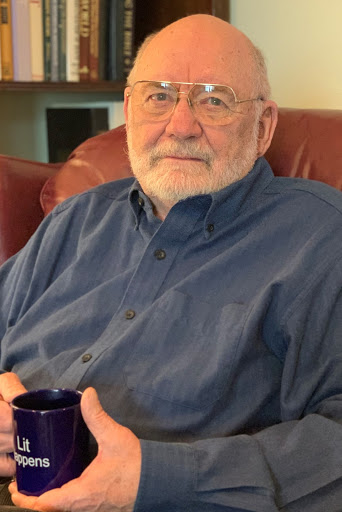

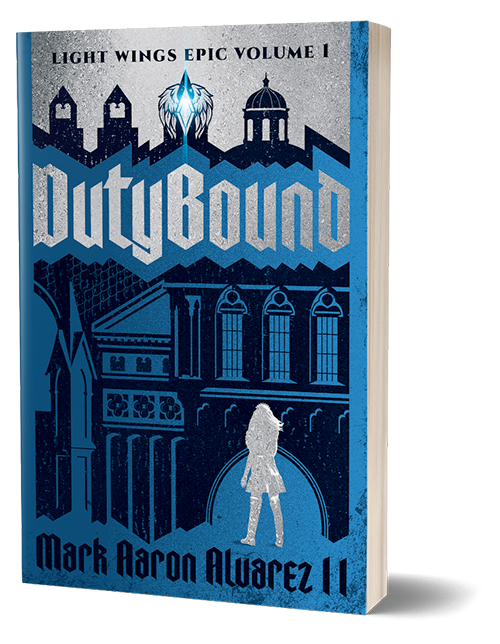 San Antonio, TEXAS – As long as there is light, there is hope. This sentiment and more abound in author Mark A. Alvarez’s debut novel, “Dutybound,” (June 22, Books Fluent), in which discovering faith and morality culminate in an epic fantasy where we are encouraged to destroy the beliefs that limit us and our destinies.
San Antonio, TEXAS – As long as there is light, there is hope. This sentiment and more abound in author Mark A. Alvarez’s debut novel, “Dutybound,” (June 22, Books Fluent), in which discovering faith and morality culminate in an epic fantasy where we are encouraged to destroy the beliefs that limit us and our destinies.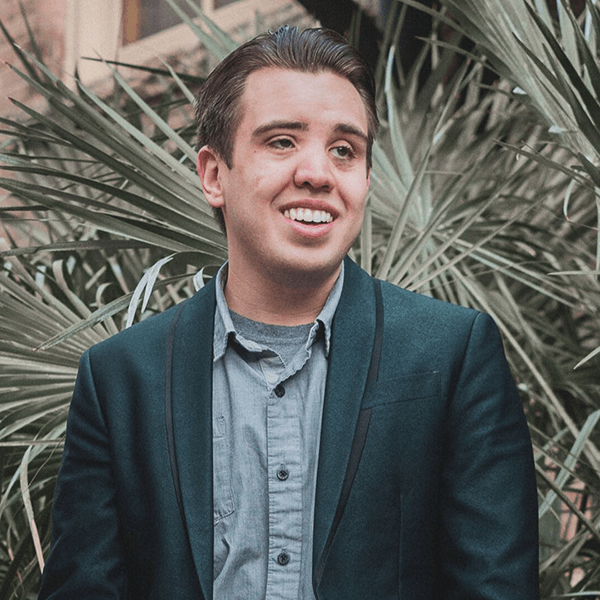
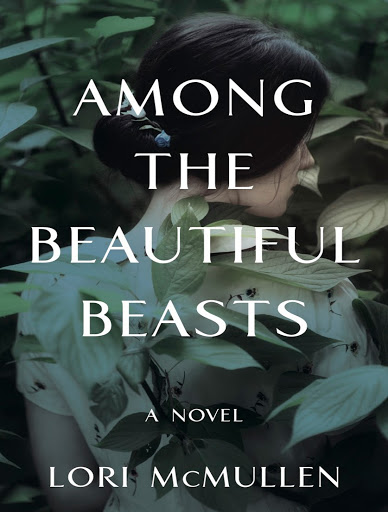 CHICAGO, IL–Set in the early 1900s, “Among the Beautiful Beasts” (She Writes Press, June 1, 2021) reveals the untold story of Marjory Stoneman Douglas, a woman who would become known for her tireless advocacy work in protecting the Florida Everglades.
CHICAGO, IL–Set in the early 1900s, “Among the Beautiful Beasts” (She Writes Press, June 1, 2021) reveals the untold story of Marjory Stoneman Douglas, a woman who would become known for her tireless advocacy work in protecting the Florida Everglades.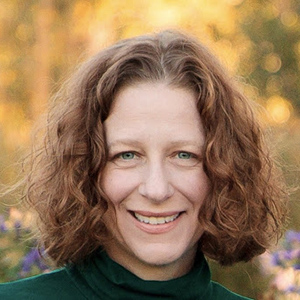 Lori McMullen grew up in unincorporated Dade County, outside of Miami. Growing up, her family took an annual trip to the west coast of Florida. McMullen was inspired by the scenic drive along Route 41, a two-lane, pot-hole ridden stretch of road that bisected Everglades National Park and Big Cypress National Preserve. South Florida found its way into her heart and into her writing, even after she left Miami to attend Dartmouth College and Harvard Law School. McMullen currently lives with her husband and three daughters in Chicago. Her short stories have been featured in the Tampa Review and Slush Pile magazine. “Among the Beautiful Beasts” (2021) is her first novel. For more information on her life and work, please visit:
Lori McMullen grew up in unincorporated Dade County, outside of Miami. Growing up, her family took an annual trip to the west coast of Florida. McMullen was inspired by the scenic drive along Route 41, a two-lane, pot-hole ridden stretch of road that bisected Everglades National Park and Big Cypress National Preserve. South Florida found its way into her heart and into her writing, even after she left Miami to attend Dartmouth College and Harvard Law School. McMullen currently lives with her husband and three daughters in Chicago. Her short stories have been featured in the Tampa Review and Slush Pile magazine. “Among the Beautiful Beasts” (2021) is her first novel. For more information on her life and work, please visit: 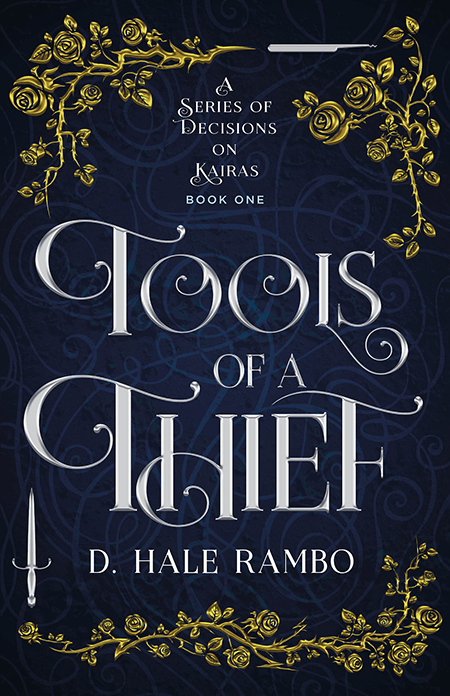 ALLEN, Texas – D. Hale Rambo combines personality and fantasy to create a carefully crafted, character-centric story about finding your true happiness. Tools of a Thief: A Series of Decisions on Kairas (May 25, 2021, Fiercewood Press) takes readers on an unforgettable adventure with characters they’ll love from the first page.
ALLEN, Texas – D. Hale Rambo combines personality and fantasy to create a carefully crafted, character-centric story about finding your true happiness. Tools of a Thief: A Series of Decisions on Kairas (May 25, 2021, Fiercewood Press) takes readers on an unforgettable adventure with characters they’ll love from the first page. D. HALE RAMBO: D. Hale Rambo is an avid reader, Pathfinder/Dungeons & Dragons player, bubble bath connoisseur, and author. She has been writing and creating other worlds since she was old enough to mark them on her bedroom wall. As a dungeon master and in life, D. Hale Rambo believes in the fun of morale bonuses, inspiration, and always using cover. Get updates on the series, say hello, or debate with her about the versatility of gnomes at
D. HALE RAMBO: D. Hale Rambo is an avid reader, Pathfinder/Dungeons & Dragons player, bubble bath connoisseur, and author. She has been writing and creating other worlds since she was old enough to mark them on her bedroom wall. As a dungeon master and in life, D. Hale Rambo believes in the fun of morale bonuses, inspiration, and always using cover. Get updates on the series, say hello, or debate with her about the versatility of gnomes at 
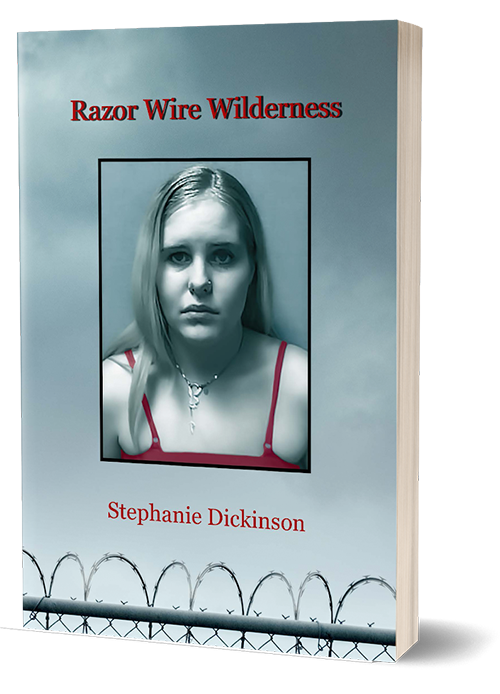 NEW YORK – Perpetrator. Bystander. Victim.
NEW YORK – Perpetrator. Bystander. Victim.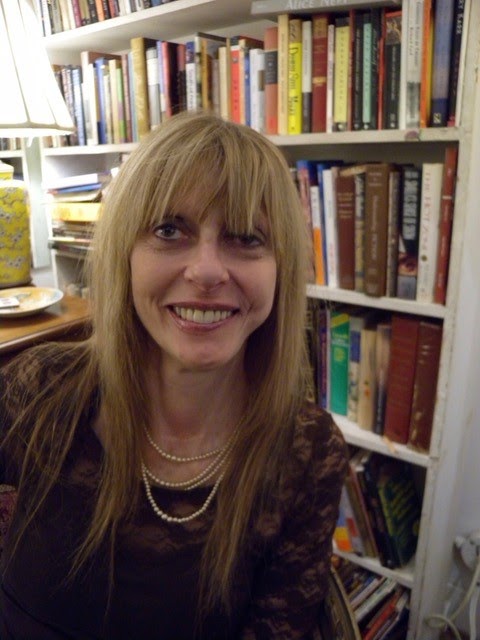 Stephanie Dickinson, raised on an Iowa farm, now lives in New York City with the poet Rob Cook and their senior citizen feline, Vallejo. Her novels “Half Girl” and “Lust Series” are published by Spuyten Duyvil, as is her feminist noir “Love Highway.” Other books include “Heat: An Interview with Jean Seberg” (New Michigan Press); “Flashlight Girls Run” (New Meridian Arts Press); “The Emily Fables” (ELJ Press); and “Big-Headed Anna Imagines Herself” (Alien Buddha). She has published poetry and prose in literary journals including Cherry Tree, The Bitter Oleander, Mudfish, Another Chicago Magazine, Lit, The Chattahoochee Review, The Columbia Review, Orca and Gargoyle, among others. Her stories have been reprinted in New Stories from the South, New Stories from the Midwest, and Best American Nonrequired Reading. She received distinguished story citations in Best American Short Stories, Best American Essays and numerous Pushcart anthology citations. In 2020, she won the Bitter Oleander Poetry Book Prize with her “Blue Swan/Black Swan: The Trakl Diaries.” To support the holy flow, she has long labored as a word processor for a Fifth Avenue accounting firm.
Stephanie Dickinson, raised on an Iowa farm, now lives in New York City with the poet Rob Cook and their senior citizen feline, Vallejo. Her novels “Half Girl” and “Lust Series” are published by Spuyten Duyvil, as is her feminist noir “Love Highway.” Other books include “Heat: An Interview with Jean Seberg” (New Michigan Press); “Flashlight Girls Run” (New Meridian Arts Press); “The Emily Fables” (ELJ Press); and “Big-Headed Anna Imagines Herself” (Alien Buddha). She has published poetry and prose in literary journals including Cherry Tree, The Bitter Oleander, Mudfish, Another Chicago Magazine, Lit, The Chattahoochee Review, The Columbia Review, Orca and Gargoyle, among others. Her stories have been reprinted in New Stories from the South, New Stories from the Midwest, and Best American Nonrequired Reading. She received distinguished story citations in Best American Short Stories, Best American Essays and numerous Pushcart anthology citations. In 2020, she won the Bitter Oleander Poetry Book Prize with her “Blue Swan/Black Swan: The Trakl Diaries.” To support the holy flow, she has long labored as a word processor for a Fifth Avenue accounting firm.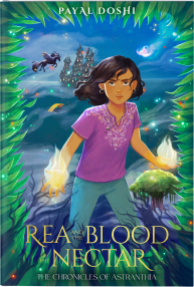 EDINA, MN – Payal Doshi offers young readers a new world in her debut novel, “Rea and the Blood of the Nectar” (June 15, 2021, Mango and Marigold Press). This fast-paced middle grade fantasy is full of adventure, excitement, and unforgettable characters fighting together for family and freedom. Doshi’s lyrical, quick-witted writing is sure to leave every reader yearning for more!
EDINA, MN – Payal Doshi offers young readers a new world in her debut novel, “Rea and the Blood of the Nectar” (June 15, 2021, Mango and Marigold Press). This fast-paced middle grade fantasy is full of adventure, excitement, and unforgettable characters fighting together for family and freedom. Doshi’s lyrical, quick-witted writing is sure to leave every reader yearning for more! Payal Doshi has a Masters in Creative Writing (Fiction) from The New School, New York. Having lived in the UK and US, she noticed a lack of Indian protagonists in global children’s fiction and one day wrote the opening paragraph to what would become her first children’s novel.
Payal Doshi has a Masters in Creative Writing (Fiction) from The New School, New York. Having lived in the UK and US, she noticed a lack of Indian protagonists in global children’s fiction and one day wrote the opening paragraph to what would become her first children’s novel. Minneapolis, Minnesota–After Justice Ruth Bader Ginsberg’s passing in September, social media instantly flooded with posts mourning and honoring Ginsberg’s life and legacy. Yet the newly vacant Supreme Court seat also caused concern, with many women wondering if, how, and when their access to birth control would be impacted. At a time when reproductive rights are still being contested across the country, novels like “Lemons in the Garden of Love” (She Writes Press, May 11, 2021) should be required reading.
Minneapolis, Minnesota–After Justice Ruth Bader Ginsberg’s passing in September, social media instantly flooded with posts mourning and honoring Ginsberg’s life and legacy. Yet the newly vacant Supreme Court seat also caused concern, with many women wondering if, how, and when their access to birth control would be impacted. At a time when reproductive rights are still being contested across the country, novels like “Lemons in the Garden of Love” (She Writes Press, May 11, 2021) should be required reading. AMES SHELDON: was born in Minneapolis, Minnesota, and grew up in Wayzata, Minnesota. After graduating from Northrop Collegiate School, she attended Bryn Mawr College, where she majored in English. After graduating, she worked in the legal department of a chemical company, as a reporter at two newspapers, as office manager of a start-up auto salvage business, and eventually as a grant writer and development officer for a variety of nonprofit organizations, ranging from the Sierra Club in San Francisco to the Minnesota Historical Society and the Minneapolis Public Library. She has an M.A. in American Studies and was lead author and associate editor of the groundbreaking Women’s History Sources: A Guide to Archives and Manuscript Collections in the United States (R.R. Bowker, 1979). In the process of working on this monumental reference book, Ames discovered her love of women’s history and of using primary sources for research. Her debut novel, Eleanor’s Wars, won the 2016 Benjamin Franklin Gold Award for Best New Voice: Fiction. Her second novel, Don’t Put the Boats Away, was published on August 27, 2019, by She Writes Press. Her third novel, Lemons in the Garden of Love, will be published in 2021. For more information on Sheldon’s life and work, please visit:
AMES SHELDON: was born in Minneapolis, Minnesota, and grew up in Wayzata, Minnesota. After graduating from Northrop Collegiate School, she attended Bryn Mawr College, where she majored in English. After graduating, she worked in the legal department of a chemical company, as a reporter at two newspapers, as office manager of a start-up auto salvage business, and eventually as a grant writer and development officer for a variety of nonprofit organizations, ranging from the Sierra Club in San Francisco to the Minnesota Historical Society and the Minneapolis Public Library. She has an M.A. in American Studies and was lead author and associate editor of the groundbreaking Women’s History Sources: A Guide to Archives and Manuscript Collections in the United States (R.R. Bowker, 1979). In the process of working on this monumental reference book, Ames discovered her love of women’s history and of using primary sources for research. Her debut novel, Eleanor’s Wars, won the 2016 Benjamin Franklin Gold Award for Best New Voice: Fiction. Her second novel, Don’t Put the Boats Away, was published on August 27, 2019, by She Writes Press. Her third novel, Lemons in the Garden of Love, will be published in 2021. For more information on Sheldon’s life and work, please visit: 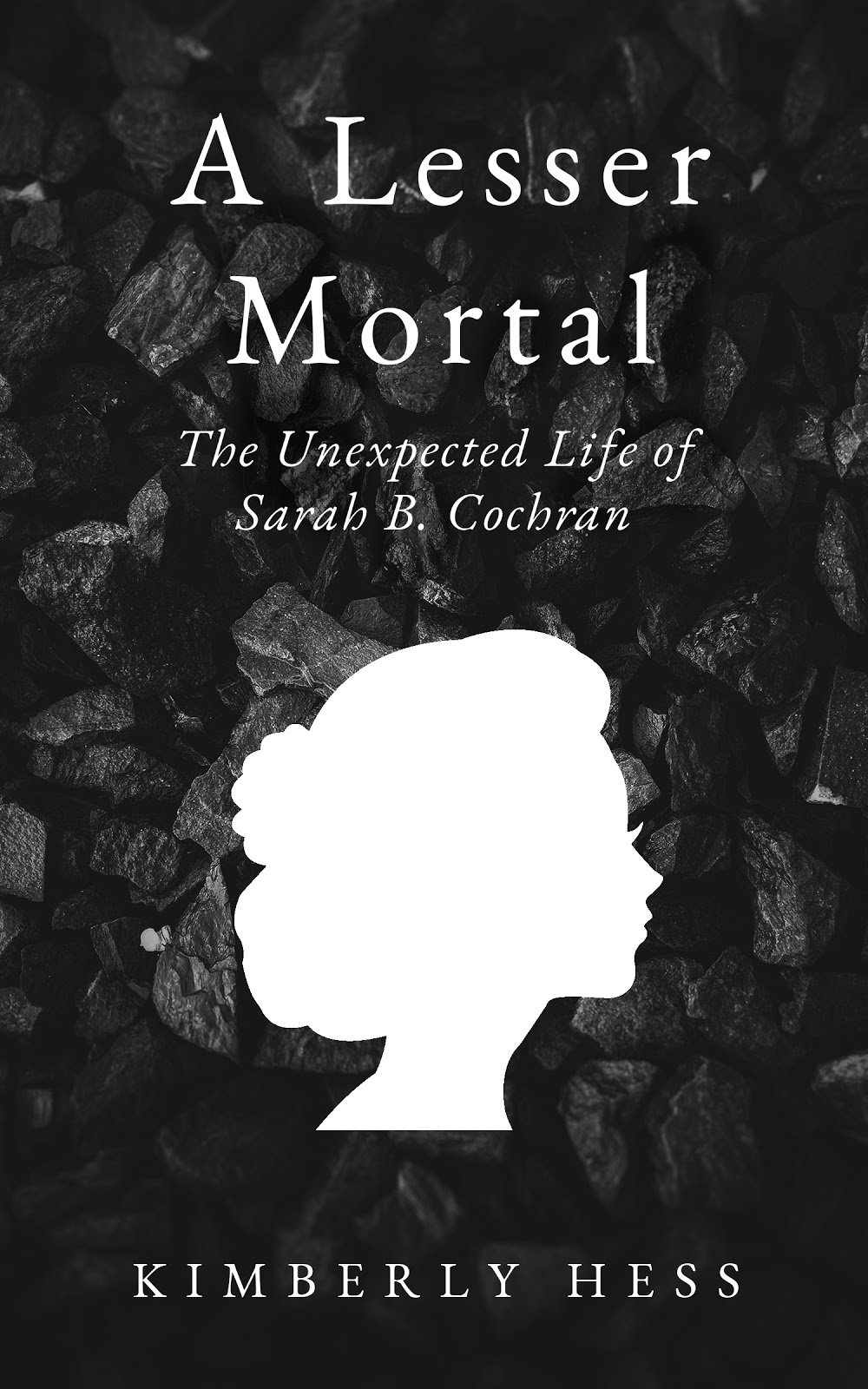 PRINCETON, New Jersey – No one expected Sarah B. Cochran to push the boundaries of her era’s expectations for women. Born to humble beginnings, she became an unexpected coal and coke industry leader and philanthropist at a time when Pennsylvania women couldn’t vote or serve on juries. Ironically, women were also legally barred from working in and around mines at the time she served as owner and director of successful coal and coke companies. She was an outspoken advocate for education and women’s suffrage, working to ensure that voices like hers were respected and listened to – not silenced.
PRINCETON, New Jersey – No one expected Sarah B. Cochran to push the boundaries of her era’s expectations for women. Born to humble beginnings, she became an unexpected coal and coke industry leader and philanthropist at a time when Pennsylvania women couldn’t vote or serve on juries. Ironically, women were also legally barred from working in and around mines at the time she served as owner and director of successful coal and coke companies. She was an outspoken advocate for education and women’s suffrage, working to ensure that voices like hers were respected and listened to – not silenced.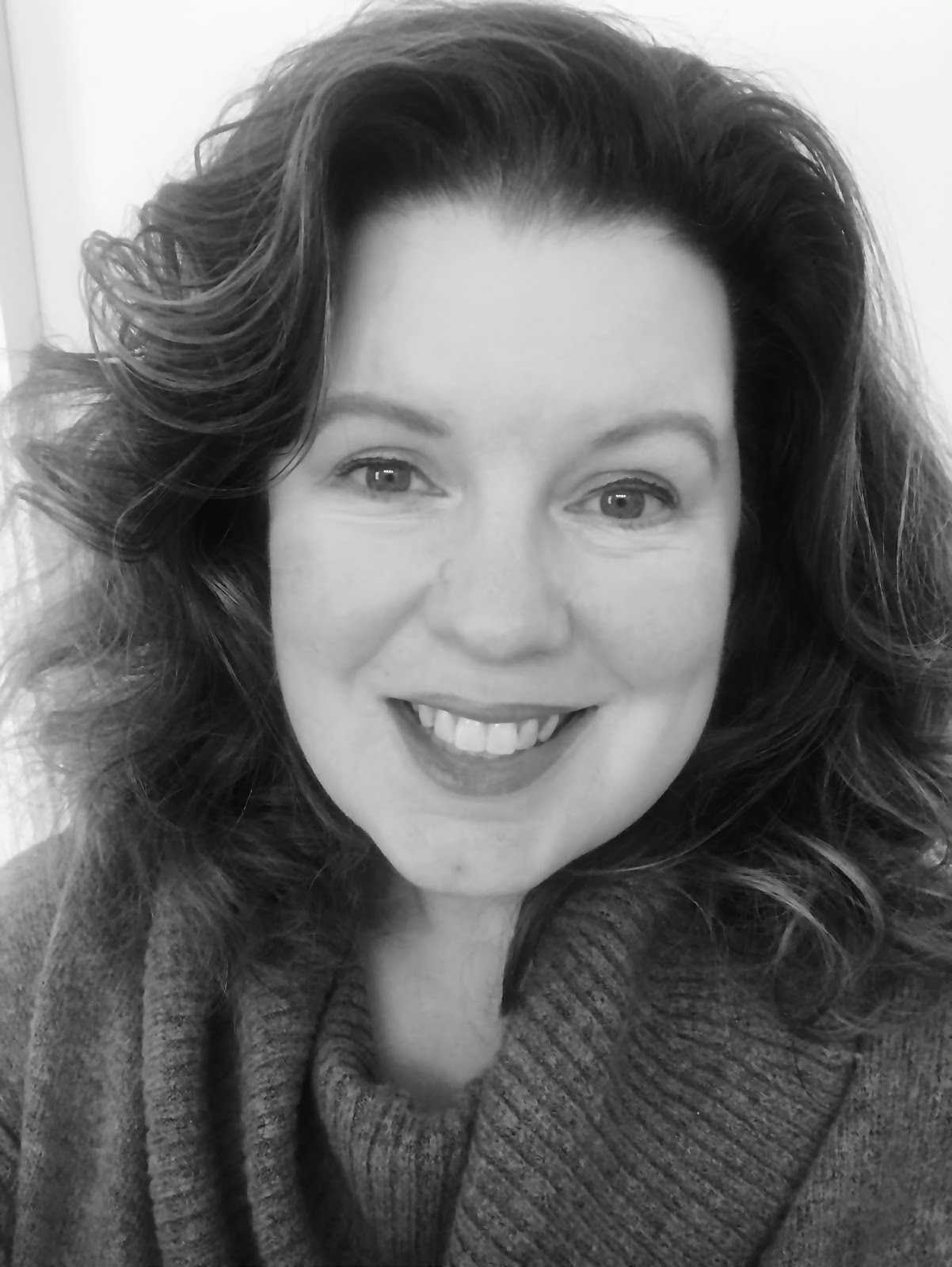 KIMBERLY HESS: During her business career of nearly twenty years, Kimberly Hess served in volunteer leadership roles at the global and local levels for Smith College’s Alumnae Association and Office of Admission, and she was a trustee of the Alice Paul Institute and a board member of the Chubb Partnership of Women. Her writing has appeared on the websites of Thrive Global, the National Women’s History Museum and the Forté Foundation, as well as on the blogs of the Women’s Museum of California and the David Library of the American Revolution. She has a B.A. in Economics and International Relations from Smith College, an M.B.A. in Marketing from Rutgers Business School, and a Certificate in Historic Preservation from the Caspersen School of Graduate Studies at Drew University. An avid genealogist and traveler, she lives in New Jersey with her husband and daughter.
KIMBERLY HESS: During her business career of nearly twenty years, Kimberly Hess served in volunteer leadership roles at the global and local levels for Smith College’s Alumnae Association and Office of Admission, and she was a trustee of the Alice Paul Institute and a board member of the Chubb Partnership of Women. Her writing has appeared on the websites of Thrive Global, the National Women’s History Museum and the Forté Foundation, as well as on the blogs of the Women’s Museum of California and the David Library of the American Revolution. She has a B.A. in Economics and International Relations from Smith College, an M.B.A. in Marketing from Rutgers Business School, and a Certificate in Historic Preservation from the Caspersen School of Graduate Studies at Drew University. An avid genealogist and traveler, she lives in New Jersey with her husband and daughter.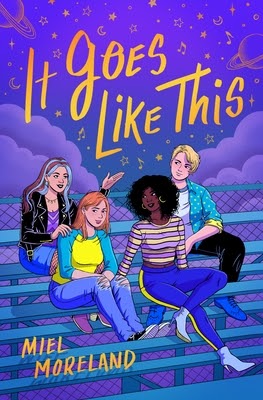 Eva, Celeste, Gina, and Steph used to think their friendship was unbreakable. After all, they’ve been through a lot together, including the astronomical rise of Moonlight Overthrow, the world-famous queer pop band they formed in middle school, never expecting to headline anything bigger than the county fair.
Eva, Celeste, Gina, and Steph used to think their friendship was unbreakable. After all, they’ve been through a lot together, including the astronomical rise of Moonlight Overthrow, the world-famous queer pop band they formed in middle school, never expecting to headline anything bigger than the county fair.
